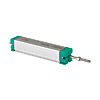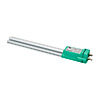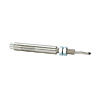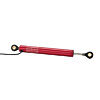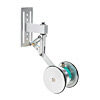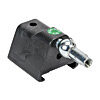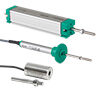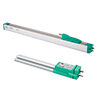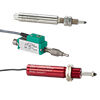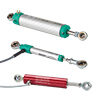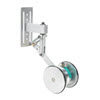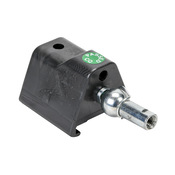 Cookies are not enabled on your browser.
Cookies are not enabled on your browser.Cookies are required for our site. Please enable cookies in your browser preferences to continue.
FedEx orders placed before 4:00PM ET on Thursday, April 17th will ship same day. Freight & UPS orders have a 1:00PM ET cutoff. Orders placed after the Thursday cutoff will ship Monday, April 21st.
Note: Due to the Friday holiday, we will not be able to ship next day orders for Saturday or Monday delivery.
- Barcode / RFID / Vision
- Bulk Wire & Cable
- Cables (Terminated)
- Circuit Protection / Fuses / Disconnects
- Communications
- Drives & Soft Starters
- Enclosure Thermal Management & Lights
- Enclosures & Racks
- Field I/O
- HMI (Human Machine Interface)
- Hydraulic Components
- Motion Control
- Motor Controls
- Motors
- Pneumatic Components
- Power Products (Electrical)
- Power Transmission (Mechanical)
- Process Control & Measurement
- Programmable Controllers
- Pushbuttons / Switches / Indicators
- Relays / Timers
- Safety
- Sensors / Encoders
- Stacklights
- Structural Frames / Rails
- Tools & Test Equipment
- Valves
- Water (Potable) Components
- Wiring Solutions
- Retired Products
- Programmable Logic Controllers
- Productivity1000 PLCs
- Productivity2000 PLCs
- Productivity3000 PLCs
- ProductivityCODESYS
- LS Electric XGB Series PLCs
- ProductivityOpen
- CLICK PLCs
-
Do-more H2 PLCs or
Do-more T1H Series - Do-more BRX PLCs
- C-more Touch Panels
- AC & DC Drives
- Motion Control Components
- Servos
- StrideLinx
- Pneumatics
Configuration Utilities
- PLC Family Selector
- P1000 PLC Systems
- P2000 PLC Systems
- P3000 PLC Systems
- ProductivityCODESYS
- CLICK PLC Systems
- Do-more® BRX PLC Systems
- LS-Electric® XGB PLC Systems
- Productivity®Open Systems
- AC Motors
- Datalogic® Safety Light Curtains
- LS-Electric® Servo Systems
- Nitra® Pneumatic Grippers
- Object Detection (Sensors)
- PAL Controller Configurator
- Precision Gearbox Selector
- Protos X® Field I/O
- Quadritalia® Modular Enclosures
- Stellar® Soft Starters
- Stepper System Selector
- SureFrame T-slot Extrusion
- SureMotion® XYZ Gantry
- SureServo2® System Selector
- SureStep® Linear Actuators
- Timing Belts & Pulleys
- Werma® Stacklights
- ZIPLinks
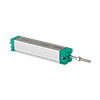
Linear position sensors convert the linear displacement of connected machinery into an electrical signal proportional to the object's displacement. Models are available in many sensing technologies, mechanical operation styles, mounting configurations, and stroke lengths.

This page will refresh momentarily.
Warning
Some of the selected facets have been selected by the {{ assistanceData.title }} Help.
Resetting/clearing ALL facets will end {{ assistanceData.title }} Help.
![Help icon]() Selection Assistance - {{ assistanceData.title }}
Selection Assistance - {{ assistanceData.title }}
Stride Interactive Product Tour Request
Linear Position Sensors
Category Selection
Linear position sensors convert the linear displacement of an object into a proportional electrical signal. They are available in many mechanical styles and mounting configurations.
- Linear potentiometers use resistance between the wiper terminal and end terminals to provide a distance measurement; they typically require a signal conditioner or a 10VDC supply to provide an analog signal for a PLC
- Inductive linear transducers use inductive, non-contact technology to convert linear displacement to a 0 to 10 VDC or 4 to 20 mA analog signal
- Magnetostrictive sensors employ a magnet traveling along a rigid linear housing to provide linear position feedback via 0 to 10 VDC or 4 to 20 mA analog outputs
- Encoder measuring wheels ride directly on a product or conveyer belt to measure distance/length or provide speed control feedback. Quadrature pulse output signals of 250PPR or 1250PPR are provided.
Fixed Slide
Newest Additions!
- ProSense LSR-33P series fixed-slide linear potentiometers
Fixed-slide linear position sensors provide a fixed, threaded rod process connection and are available in a variety of housing styles, ranging from compact round designs to robust rectangular options suitable for applications with heavy vibration. Potentiometer and inductive technologies are available.
Rodless Slide
Newest Additions!
- ProSense LSRS-33P series rodless-slide linear potentiometers
Rodless-slide linear position sensors feature a cursor that moves along the entire sensor length, providing minimum installation length for applications where space is at a premium, such as plastic injection presses. Potentiometer and magnetostrictive technologies are available.
Spring Loaded Slide
Newest Additions!
- ProSense LSSR-33P series spring-loaded-slide linear potentiometers
Spring-loaded-slide linear position sensors feature a push-in style slide actuator with ball tip to measure distance when pressed, ideal for applications where the sensing element cannot be attached to the object whose position is being measured. Potentiometer and inductive technologies are available.
Pivoting Slide
Newest Additions!
- ProSense LCR-38P and LCR-18P series pivoting-slide linear potentiometers
Pivoting-slide linear position sensors use a rod eye mounting system with a cylindrical body that allows free movement of the transducer axle, adding versatility to their application use. Potentiometer and inductive technologies are available.
Encoder Linear Measuring Systems
New!
Encoder linear measuring systems provide a spring-loaded, lever mount for a dual-shaft encoder with rubberized wheels attached to both shafts. The wheels ride directly on a product or conveyer belt to measure distance, length or provide speed control feedback. These are often used for cut-to-length and positioning applications.
Check out our job openings
Free Online PLC Training
FREE Video Tutorials
FREE e-Newsletter
Automation Notebook
Product Literature
White Papers
News, Product and Training Bulletins
E-Books
 Safe &
Secure
Safe &
Secure

We accept VISA, MasterCard, Discover, American Express, PayPal or company purchase orders.
Voted #1 mid-sized employer in Atlanta
Check out our
job openings

